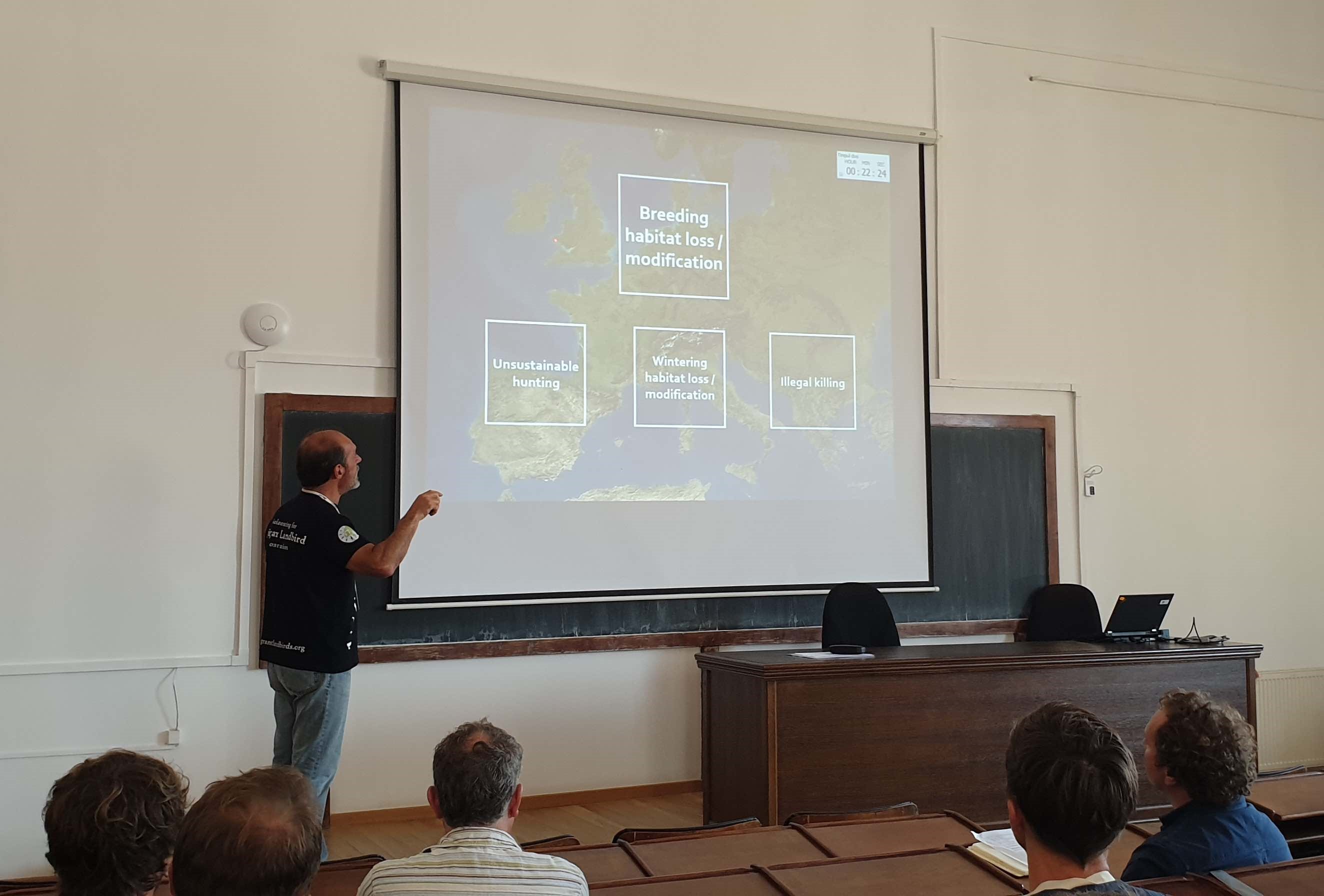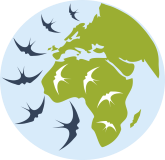The MLSG held its third symposium in association with the European Ornithologists Union biennial conference this August in Cluj- Napoca, Romania. Forty-eight delegates from 18 countries were present for two days of talks, workshops and a brainstorming session to reinvigorate a COST application for a wider migratory bird research network. The symposium was held over a hot and lively weekend, with a local festival going on in the city surroundings.
The symposium started with two applied keynotes on Saturday. The first was from Luitzen Santman about Birdlife Netherlands conservation efforts in the Europe-Africa flyway, and the need for sustainable development initiatives like the shea butter tree project in the Sahel. It was a good start to the symposium, highlighting the wider context of the need to incorporate research findings into the real lives of people who share their land with migrants. The second talk by Carles Carboneras continued this theme, but in a more specific way, outlining the Species Action Plan for the turtle dove – how such plans are developed, and the complications of actually then getting individual countries to take the recommended actions.
After a coffee break there were two further keynotes. Wieland Heim talked about the Asian flyway and the huge gap of knowledge we have in tracking studies there, with its 170 species of long distance migrant songbirds and unique combination of desert and mountain barriers. Then Sissel Sjoberg followed with a talk about flight behaviour of individual songbirds throughout migration – for example, how red-backed shrikes change height over thousands of meters during a night flight to capitalize on winds - now at last being detailed through multi-sensor loggers.
After a lunch break the plenary speaker Malcolm Burgess gave an account of migrant declines and how migratory routes, and ecology throughout the annual cycle have led to declines in spotted flycatchers, pied flycatchers, wood warblers and whinchats. Malcolm expanded some of the main themes touched on by earlier speakers of the need for connectivity in research, and the huge gaps in knowledge we have for even the well-studied species he described.
The first day was then concluded by four parallel workshop sessions. A workshop on geolocator data analysis led by Martins Briedis that was very popular, as testament to the large number of ongoing tracking studies at the moment. There was a workshop on a practical guide to getting started in remote sensing by Alison Beresford where the fantastic potential of Google Earth Engine was introduced. There was a workshop on non-breeding ecology led by Janne Ouwehand which resulted in very lively discussions about the need to prioritize ground research given the vacuum in non-breeding knowledge, differences in non-breeding research among flyways, and problems and solutions to unvalid(ated) assumptions underlying many indirect correlative non-breeding studies, the need for fundamental capacity building in Africa to really address this. A final workshop led by Carles Carboneras convened a small part of the European working group for the Turtle Dove Action Plan to discuss the next stages of getting it implemented. The workshop leaders reported their highlights back to the whole symposium to finish up the talks for the day. The delegates then reconvened in a local bar – the Che Guevera - to plot the continuing revolution in migrant landbird research over some much-needed drinks.
 Charm of Cluj city and an old university building as main conference venue created a unique atmosphere worth embracing.
Charm of Cluj city and an old university building as main conference venue created a unique atmosphere worth embracing.The second day continued with two sessions of the ever popular MLSG speed talks so that more or less everyone in the symposium got to speak. The main aim of any MLSG conference is to get everyone talking and everyone to each other’s attention – to facilitate networking and collaboration. The speed talks were 4 minutes apiece with 4 slides only allowed. Thirty-two speakers were squeezed in before lunch in a blizzard of study species, sites and problems, but everyone got to know what everyone else was doing, and what new data and papers there were on the horizon. Highlights included black-tailed godwit translocation experiments, future work with respect to the Himalayas as barriers to migration and tracking of three species of rubythroat, capacity building in Ghana, black-headed bunting tracking and a brilliantly simple, yet innovative project of local fencing to protect firewood production for people in Ethiopia, which then benefits migrants.
After lunch on Sunday there were two further keynotes. Martins Briedis gave a detailed talk about how individual behaviour translates into migration strategies in collared and semi-collared flycatchers, and the importance again of complete annual cycle studies to fully understand migratory population dynamics. Ivan Maggini then gave a more physiological based talk about how migrants deal with dehydration during migration, particularly when staging over the Sahara: “a barrier is not a barrier when you have the appropriate physiology or behaviour” – this could be a general quote for the conference!
The symposium was finished by two discussions. The first split the delegates into four separate groups, each tasked with brainstorming specific sections of the EU COST proposal that the MLSG unsuccessfully submitted last year. Groups tackled the “State of the Art”, “Description of the Challenge”, “Approach to the Challenge” and “Impact to Science”, providing a list of ideas for incorporation into a revised and improved version of the proposal that will be resubmitted this November. The symposium was finally concluded by a brief MLSG executive committee meeting when changes of office bearers were formalized by a unanimous vote. This year several MLSG committee members have had to stand down. Although few of the former committee members were able to be at the symposium and could not be formally thanked for their work, we are very grateful for their enormous investment into the MLSG to make it into what it is now! There were many volunteers at the symposium (gently encouraged at a dinner the evening before) ready to step up, and of whom you can take notice via the website (this autumn). Every organization needs a periodic reinvigoration and this was another positive outcome of the symposium.
The symposium done, delegates headed back out into a cooler but still very lively city centre to continue the migrant chat over dinner and drinks, and to look forward to the start of the main EOU conference itself the next day. The symposium had continued the MLSG’s networking aims, been an interesting forum for the exchange of new research ideas, spread a bit of technical and specialized knowledge a bit more widely, refocused and timetabled the COST application for resubmission later this year and reinvigorated the Executive Committee with new and passionate people. And as well as being successful, it was friendly, informal and enjoyable. Next stop, the Pan African Ornithological Congress at the Victoria Falls, Zimbabwe 16-20 November 2020 to do it all again, but with the chance to expand the MLSG network much more widely over the African flyway.

Text by: Will Cresswell














